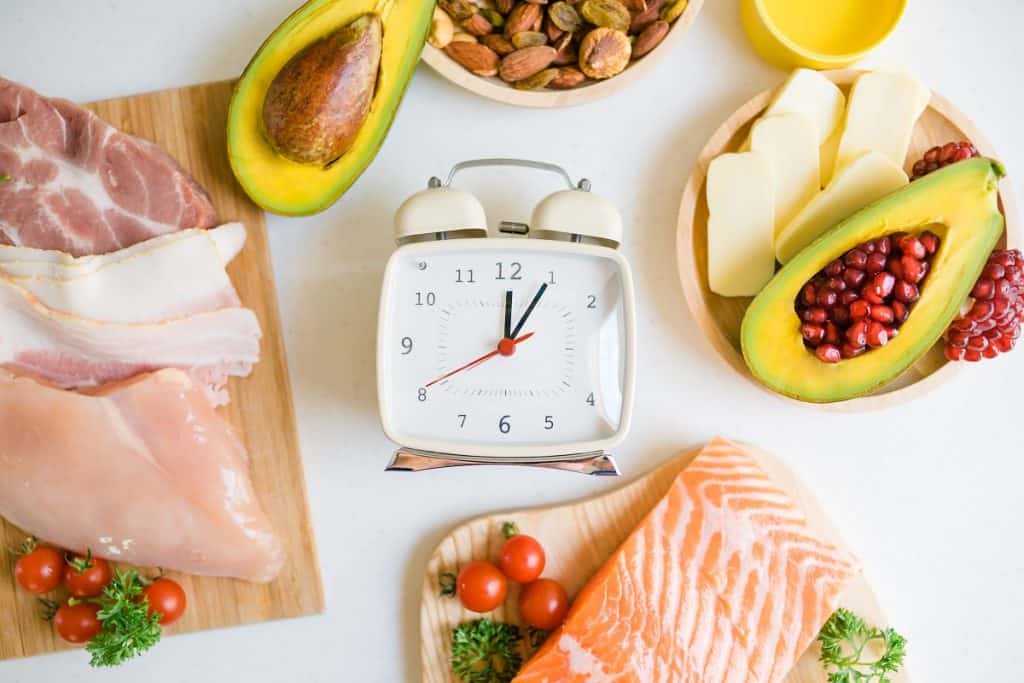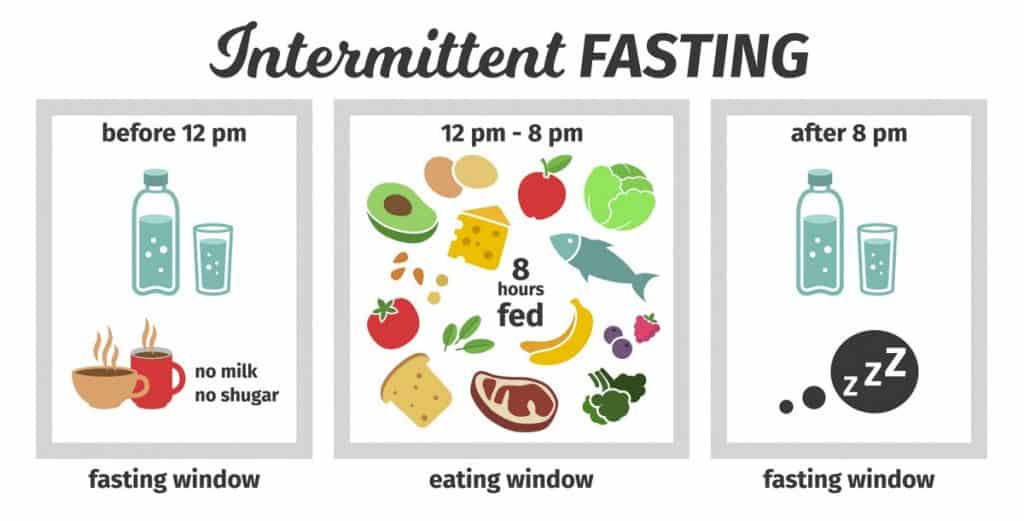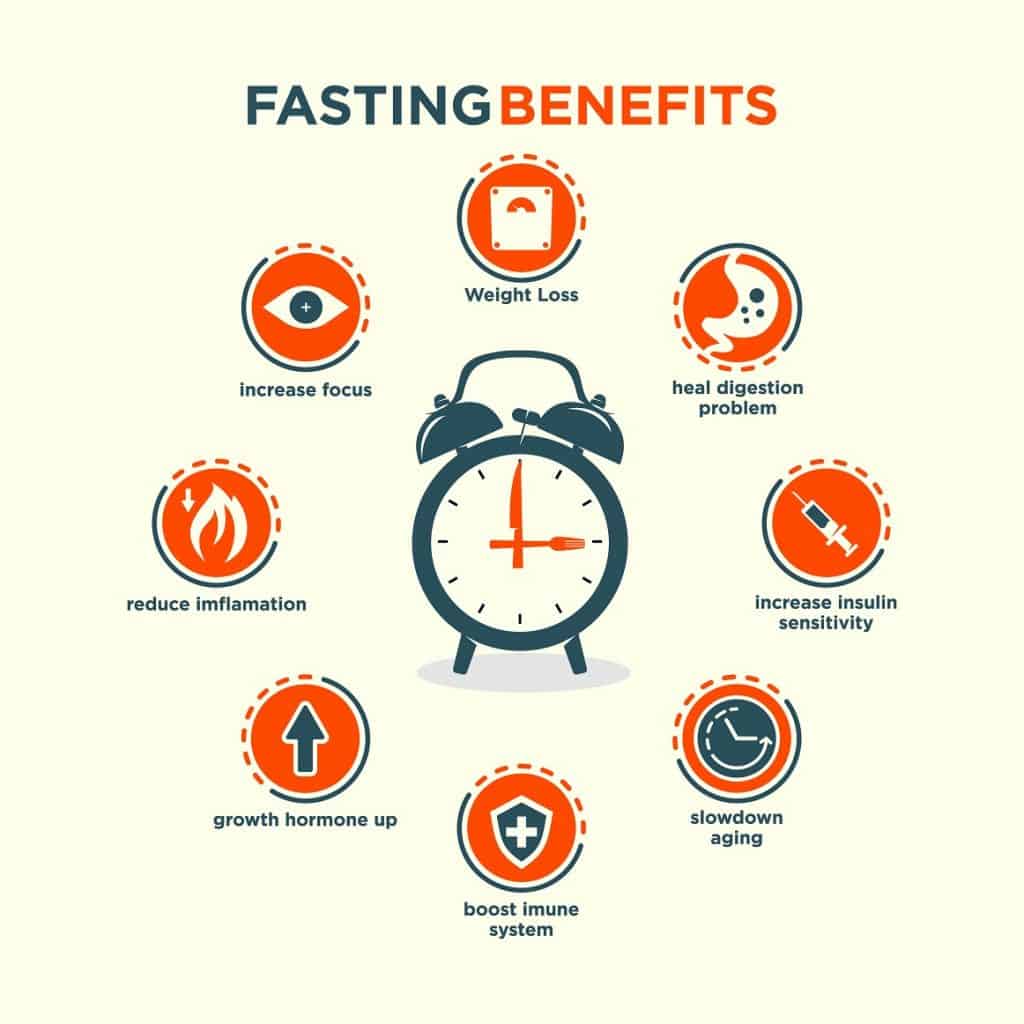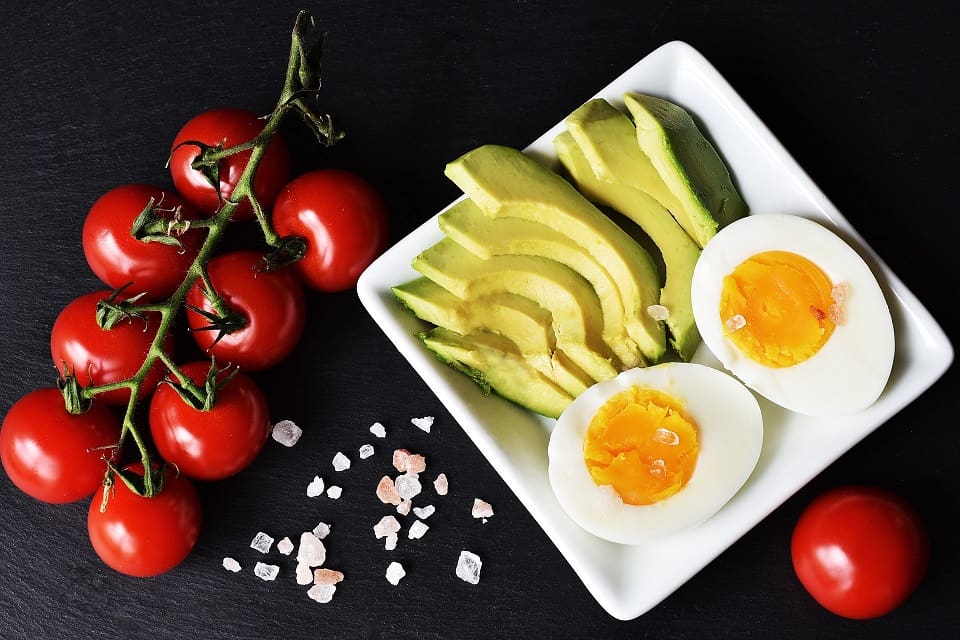Earlier I wrote articles on what to eat before a fight and before and after a regular training. However, there are also benefits to not eating anything before training and even continuing to fast afterward. Since this way of eating and training is not very intuitive, this article will cover everything you need to know about working out in a fasted state.
While a proper pre-workout meal gives you the best athletic performance, kickboxing on an empty stomach can help to:
- Lose weight
- Improve your body composition
- Train your mental strength
However, it takes time to get adapted to fasted workouts and even more so to feel good while you’re at it.
So, how does that work; how are you fueled when you train on an empty stomach? And what type of training is suited for a fasted state – does it matter at what time you’re doing this? Read on to find out how this all works, and how you can effectively integrate fasted workouts into your routine.
Why should I kickbox fasted?
There are situations where not eating before training is beneficial, for example to lose weight for your health or to get to fighting weight. However, this only works well if you:
- Train on low intensity
- Didn’t eat for long enough that your body uses fat as energy source
- Follow a ketogenic diet
Generally, low intensity exercise is the only activity where your body uses fat as preferred fuel source. For kickboxing this means that you only use fat as fuel source during very technical trainings where you don’t do explosive movements. Outside of the dojo, low intensity exercise could be cycling, hiking or jogging (so not running).
While you can get your body to burn fat during other types of training as well, your body will first deplete all of its sugar storages and even then it may prefer to “burn your muscles” before it switches to fat as fuel source. Now burning your muscles during training is the last thing you want, so read on to learn how you can get your body to become “fat adapted” and reap all the benefits of fasted workouts.
How long does it take to digest all your food?
On average, it takes 8–12 hours before your stomach has digested all its food. After that, your body is fueled by the glycogen stores (sugars) in your muscles and liver. Only after these stores are emptied, your body slowly begins to burn fat, which really gets going after 16–24 without eating.
Actually, your body doesn’t really “burn fat.” Rather, your liver converts fats into “ketones,” which then become your body’s primary fuel source. Once ketones have replaced glucose (the simplest form of sugar) as main energy source, your body enters into “ketosis.”
What are the signs that you are in ketosis?
Since your body metabolizes fat instead of carbohydrates/sugars in ketosis, your blood sugar levels remain stable. As a result, you experience:
- No more hunger feelings
- Stable energy levels (no peaks and crashes)
- Mental clarity
Though these are awesome benefits, the transition into ketosis can be difficult. That’s because most of us have been using glucose as primary fuel source for most of our lives. So once your glucose stores start running out, your body wants to replenish these ASAP.

You know what I’m talking about here: not giving the body what it’s used to begins with simple cravings, but is soon followed by irritability and may turn aggressive real quick – aka “hangry.” And then everything and everyone needs to get out of the way, because you have to eat NOW! Otherwise you’re going to die; or well, that’s at least how it feels…
Interestingly, for some people being hangry is the perfect state to kickbox in. Kickboxing is often a struggle – with your opponent and/or with yourself – and being hangry can help to embrace this struggle. This plays into your instincts, for it will literally feel as if your life is at stake! So, while eating the right food before training will give you optimum athletic performance, this is not necessarily true for all aspects of kickboxing or any other martial arts – that’s a preference that varies from person to person and even from day to day.

To make sure that your body is not struggling with this fuel transition from glucose to fats/ketones, you can eat in such a way that you’re already in ketosis during training. The simplest way to do this is via intermittent fasting (IF).
What exactly is intermittent fasting?
Intermittent fasting is a rhythm where you don’t eat for 12–20 hours per day. By repeatedly fasting for 12+ hours per day, your body gets used to switching fuel sources and going into ketosis. Overtime, your fuel transition will go faster and more fluently, and you won’t get hangry anymore.
So if you’re practicing IF – or “time restricted feeding” – you can “plan” to be in ketosis during training. While in theory it doesn’t matter which of the 24 hours you do and don’t eat, it’s easiest to plan your fasting period around your sleep. That means that if you stop eating several hours before bedtime (and postpone or skip your breakfast), you can train in ketosis somewhere in the morning or early afternoon.

During my morning Muay Thai trainings in Thailand most people weren’t eating pre-workout. Just hydrating the body and perhaps some supplements like BCAA’s and minerals – and they were ready to go!
Once again, don’t expect great results right from the get-go. Glucose remains your body’s preferred fuel source for high intensity activity, which is part of almost every Muay Thai kickboxing training. Accordingly, when you’re out of fuel but still forced to go hard, your body will do everything to get glucose during its transition of fuel sources. And your body can get glucose without you eating any carbs, namely by transforming the proteins of your muscles into glucose. In other words, your body will “burn” your muscles to fuel itself.
Ever had the feeling that you, your sports clothes, or someone around you in the gym smelled like urine? You may have smelt muscles being burned as fuel, for the byproduct of this is ammonia and urine can have an ammonia odor.
Do you want to try intermittent fasting for yourself? It can be as simple as holding out on after-dinner snacks, breakfasting a little later or skipping it altogether. If you’d like some guidance with this, I can recommend the app “Fastic.” This app contains a lot of extra information about (intermittent) fasting and has a convenient timer to track your fasting window and see in which phase of fasting you currently are.

Does fasted training burn more fat?
While you normally only burn fat during low intensity exercise, once you’re fat adapted working out in a fasted state can enable you to burn fat during other workouts too. Moreover, research shows that your fat metabolism can increase by up to 20% during a fasted workout.
In addition, after as little as 4 days of time restricted feeding you activate various beneficial genes in your body. This is because stopping your food intake earlier allows your body’s circadian rhythm (the internal clock of your body and all your organs) to synchronize with your environment. In other words, by not constantly waking your body with food coming in, you allow your body to go into recovery mode as the sun goes down. Working out in the morning, moreover, wakes your circadian rhythm and thus helps to stay in sync with your environment.
Some of the effects of activating these genes are:
- Increase in fatty acid utilization in an aerobic state
- Inflammation modulation
- Increase in antioxidant activity
The first one means that your body is better at using fat as a fuel source during aerobic exercise (endurance training). Then, help with modulating your inflammation results in faster recovery and less pains and aches, allowing you to move more freely. Finally, an increase in antioxidant activity means that your body will oxidize (“rust”) less, which results in a stronger and more resilient body.
Can I build muscle while fasting?
Fasting increases human growth hormone (HGH) and testosterone in your body. Training in a fasted state upregulates these hormones even more. So, when you do weightlifting or explosive trainings like martial arts or HIIT, you have all the right hormones in place to recover and build more muscle mass.

Interestingly, continuing to fast for 2-3 hours after training as well ramps up production of these hormones even more. This is completely contrary to the idea that building muscle mass requires you to eat whenever you can to get in as many calories as you can. Working out fasted and continuing to fast afterward is all about producing the hormones that make your body more efficient with its fuel sources and more effective at metabolizing the nutrients that you do eat.
Important note: this is only for those very experienced in fasting! Working out in a fasted state is already hard to begin with, and in the beginning you’ll do good by getting in a proper post-workout meal right after you’ve thoroughly rehydrated.
How do you get into ketosis on a ketogenic diet?
Besides fasting, you can also get into ketosis through a ketogenic diet. This diet involves eating so few carbs and proteins (10-30% of your calories) that ketones converted from fats remain your primary fuel source. Thus, on a ketogenic diet you’ll be eating 70-90% of your calories as fats.
While fats contain more calories than carbs and proteins (9 kcal vs. 4 kcal per gram), most people lose weight on a ketogenic diet. This is because a ketogenic diet puts your body in a constant state of ketosis, meaning that the fats that you take in aren’t stored but used as fuel.

Because ketones are a stable and sustainable energy source you can do longer without meals and you don’t have to necessarily eat a pre-workout meal. Just like when you begin intermittent fasting, adapting to a ketogenic diet takes time. First of all, it takes at least 3 days before you enter into “deep” ketosis, and then you’re still very far removed from the athletic performance that you’re used to.
All the top fighters that I’ve heard about their transition to a ketogenic diet explained that they’ve been missing out on their last 5-10% of explosive capacity. Since it can take over a year before the body completely adapts to a ketogenic diet, most only use follow it out of season or use it to quickly lose weight.
How do you get mentally strong when fasting?
By withholding from eating for extended periods of time you have to mentally override your food cravings. By not giving the body what it craves you learn to persevere over your instincts. Training in a fasted state, moreover, is very hard to begin with and hence makes you even stronger mentally.

Can I do kickboxing while fasting?
Once you have become fat adapted, the regular rest periods inherent to HIIT-type trainings like kickboxing and other martial arts make them very suitable for working out in a fasted state. However, make sure to focus on speed and technique during your training, and not on power or explosion.
If optimum performance isn’t the goal you can do cardio or weightlifting too. However, keep in mind that especially weightlifting is very glucose dependent and that you may feel dizzy or sick if you go hard. In any case, make sure that you properly rehydrate and refuel after you finish your workout and don’t extend your fasting period for too much longer.
Pro-tip: hydrating is not just about fluids; it’s about helping your body to retain your fluids as well. That’s where minerals come into play, especially the “electrolyte” minerals: sodium (salt), chloride, potassium, and magnesium. Since you can’t drink much during training, it’s important to properly hydrate before your fasted workout and rehydrate before you start eating afterward.
So is it better to workout fasted or fed?
That depends on the workout and on your goals. Working out fasted works well for interval and low intensity training but less so for cardio and weightlifting. Then, if you want to stimulate hormones for your health, work out fasted, but eat a potent pre-workout meal if you want peak performance.
In my experience, skipping breakfast only works well for morning runs or technical kickboxing training. The moments that I have to explode, however, I miss the last 5-10% energy output that I’m used to. For this reason, I reintegrated light pre-workout meals and post-workout shakes in the morning during my fight preparation. This way I could train harder, recover faster, and have energy for another training in the evening (at that point I was already close to my fighting weight though).
Recent Posts
The previous articles covered the foundation of fighting nutrition: the best pre- and post-workout meals, fight day nutrition, and what your everyday diet should include. This article will cover the...
Previous articles have discussed pre- and post-workout meals, fight day nutrition, and how to train without eating anything at all, so called “fasted workouts.” That means that there’s one...